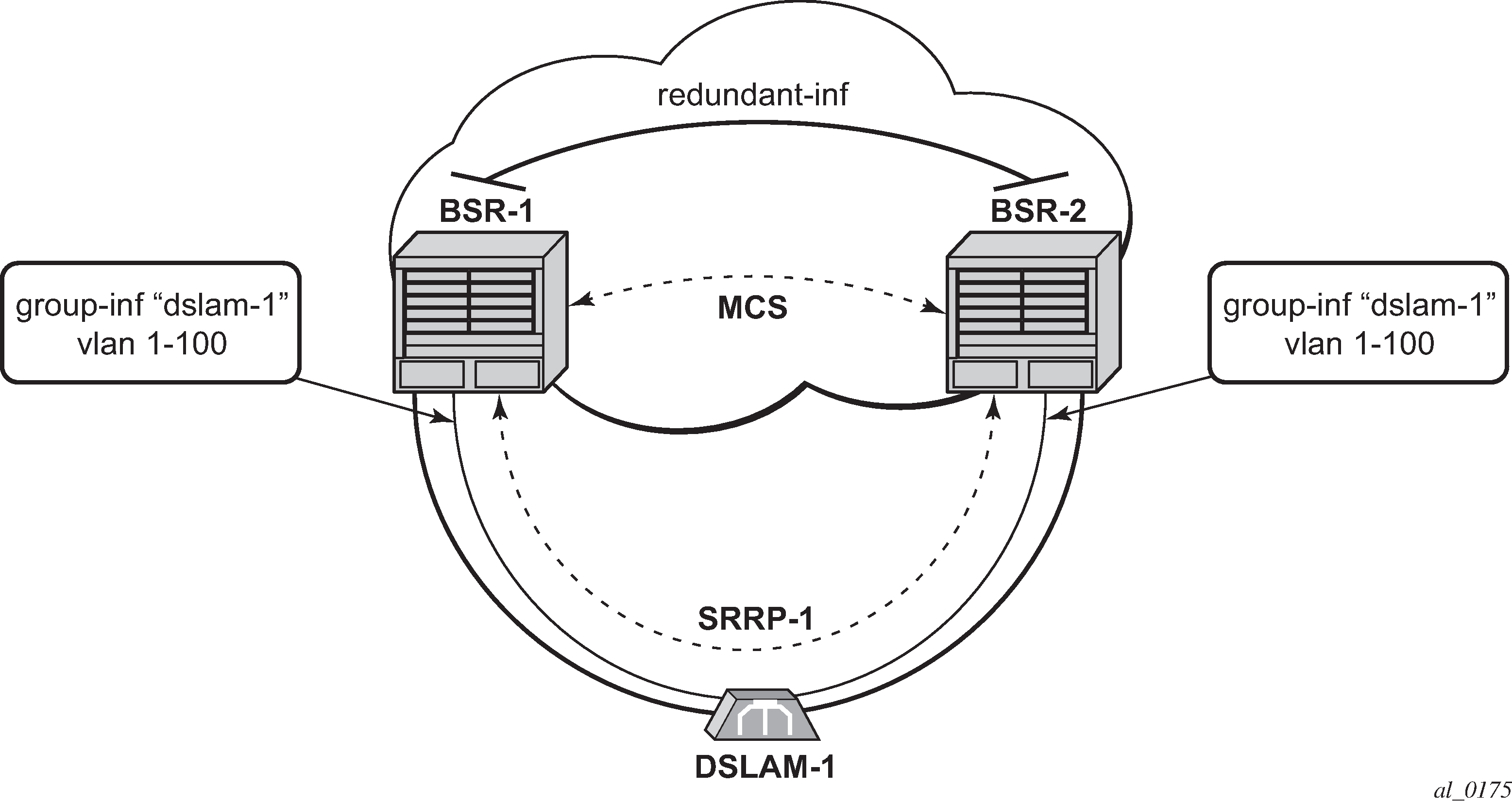Figure: Low depicts a single DSLAM dual-homed to two BSRs.

To provide dual-homing in the context of subscriber interfaces, the following items must be configured on both BSRs:
Group interface (dslam-1) with corresponding SAPs (vlan 1-100)
SRRP instance controlling a specific group interface
Redundant interface between BSRs to provide ‟shunt” connectivity
MCS connection to provide synchronization of dynamic subscriber-host entries
During the operation, BSR-1 and BSR-2 resolves active/standby relations and populates respective FDBs in such a way that, subscriber-host entries on the active node (SRRP master state) point to a corresponding group interface while subscriber-host entries on the standby node (SRRP backup state) point to the redundant interface. Note that the logical operation of the ring in the Layer 3 CO model is driven by SRRP. For more details on SRRP operation, see the Subscriber Routed Redundancy Protocol chapter.